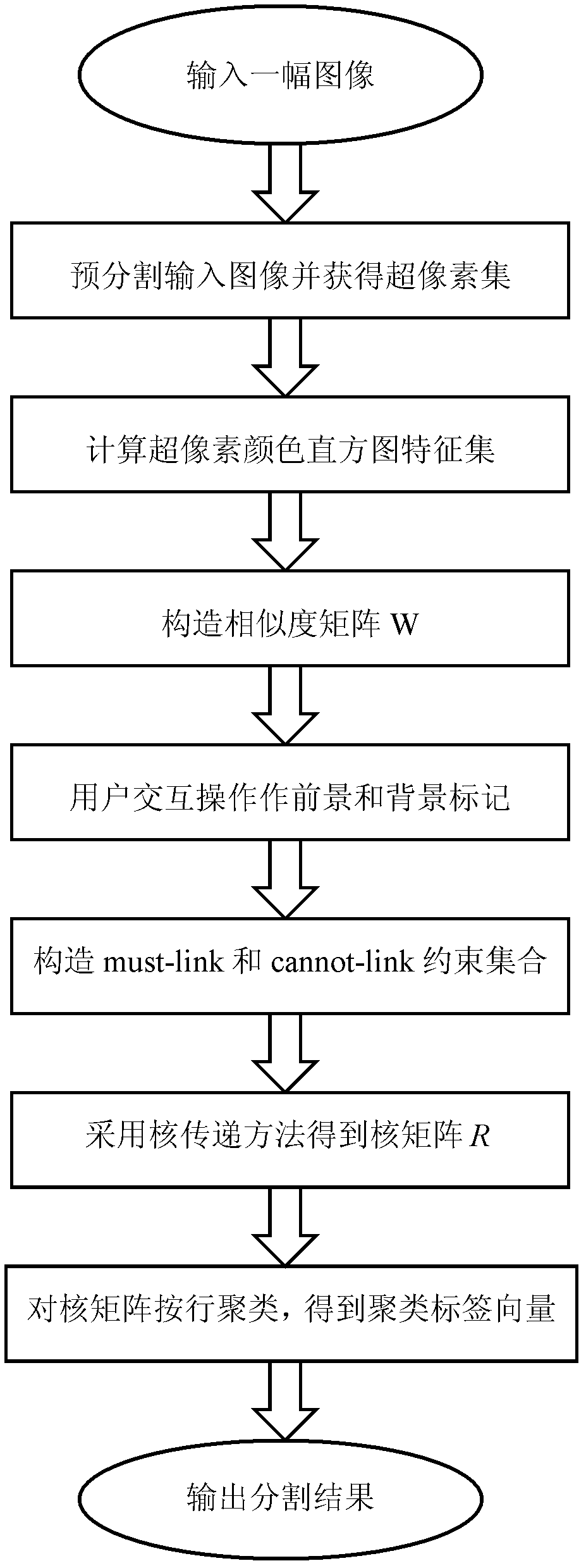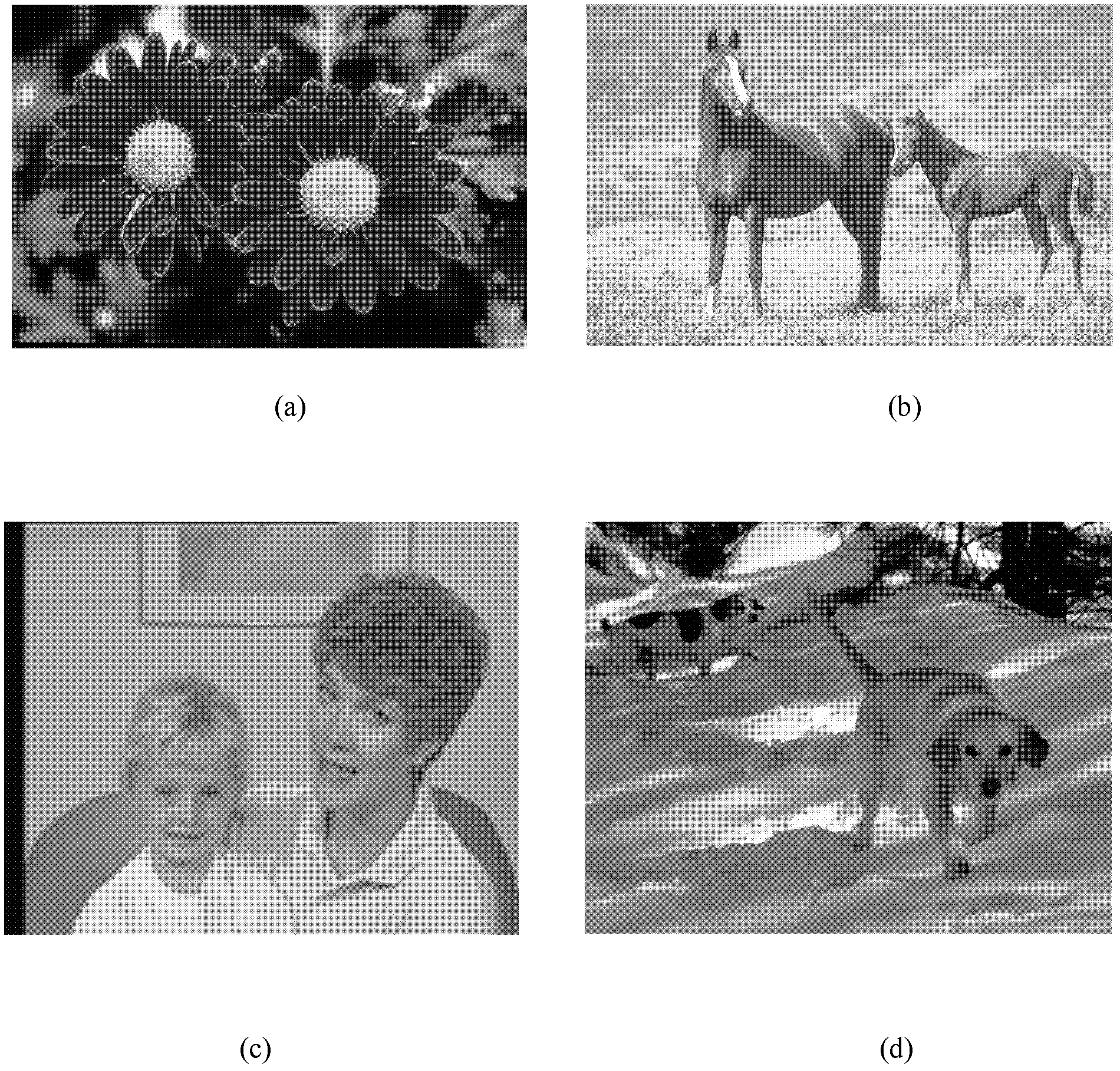Semi-automatic image cutting method based on nuclear transfer
An image segmentation and kernel transfer technology, applied in the field of image processing, can solve problems such as inability to maintain the consistency of superpixel data points, unclear edges of objects of interest, and unlearned image data, etc., to achieve consistency and false match rates Low, the effect of improving accuracy
- Summary
- Abstract
- Description
- Claims
- Application Information
AI Technical Summary
Problems solved by technology
Method used
Image
Examples
Embodiment Construction
[0030] The specific realization and effect of the present invention are described in further detail below with reference to the accompanying drawings:
[0031] refer to figure 1 , the implementation steps of the present invention are as follows:
[0032] Step 1. Input an image and pre-segment it into a set S of superpixels.
[0033] First, input an image, and use the mean shift algorithm to pre-segment the image to obtain the label of each pixel;
[0034] Then, a set of pixels with the same label is called a superpixel, and a set of n superpixels is obtained, which are respectively identified as s i , i=1, 2, ..., n, to obtain the superpixel set of the pre-segmented image
[0035] where s i is the i-th region obtained by pre-segmenting the input image by the mean shift method, and n represents the number of superpixels contained in S.
[0036] The mean shift method can be found in literature: D. Comaniciu, P. Meer, "Mean shift: a robust approach toward feature space analy...
PUM
 Login to View More
Login to View More Abstract
Description
Claims
Application Information
 Login to View More
Login to View More - R&D
- Intellectual Property
- Life Sciences
- Materials
- Tech Scout
- Unparalleled Data Quality
- Higher Quality Content
- 60% Fewer Hallucinations
Browse by: Latest US Patents, China's latest patents, Technical Efficacy Thesaurus, Application Domain, Technology Topic, Popular Technical Reports.
© 2025 PatSnap. All rights reserved.Legal|Privacy policy|Modern Slavery Act Transparency Statement|Sitemap|About US| Contact US: help@patsnap.com



